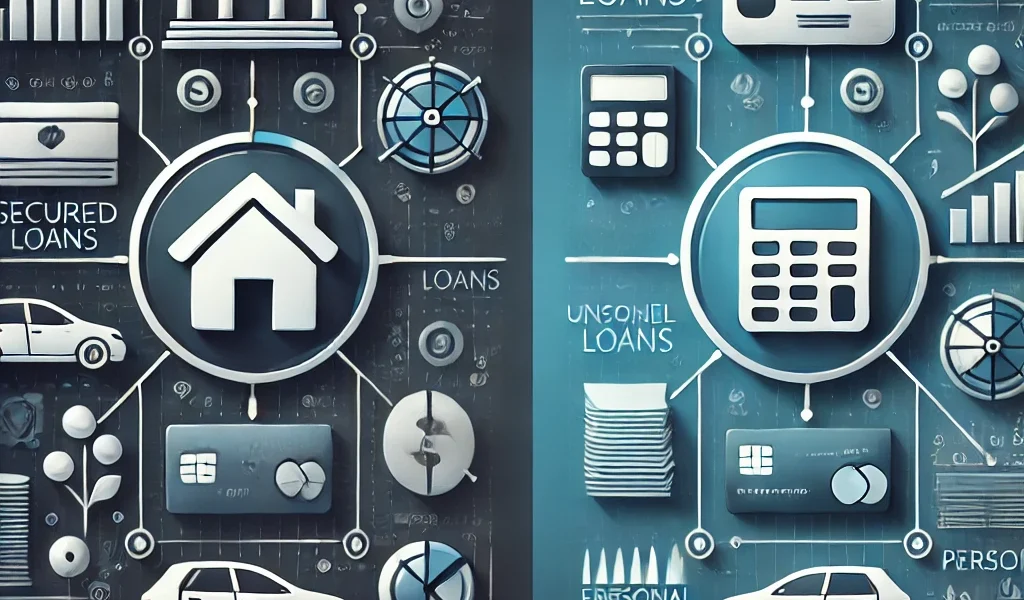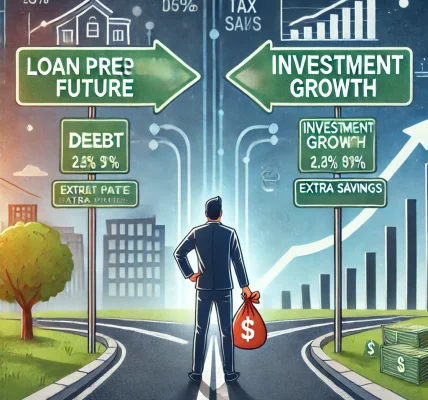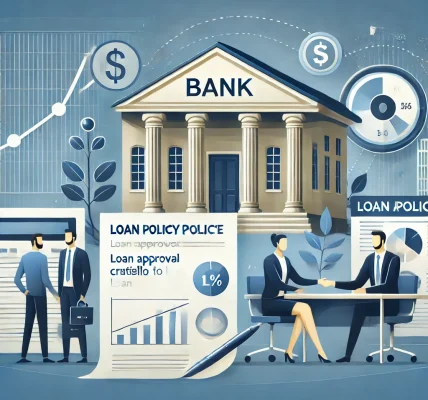When seeking a loan, borrowers often face the choice between secured and unsecured loans. Each loan type comes with its own benefits, risks, and suitability depending on financial goals, credit history, and ability to provide collateral. Understanding the differences between these loans will help borrowers make informed decisions and choose the right loan policy.
This article will break down secured vs. unsecured loans, compare their advantages and disadvantages, and provide insights on which one suits different financial situations.
What is a Secured Loan?
A secured loan is backed by collateral—an asset that the lender can seize if the borrower fails to repay the loan. Common examples of secured loans include:
- Mortgages (backed by property)
- Auto loans (backed by the vehicle)
- Home equity loans
- Secured personal loans
Advantages of Secured Loans
✅ Lower Interest Rates – Since lenders have collateral as security, interest rates are generally lower compared to unsecured loans. ✅ Higher Borrowing Limits – Lenders are more willing to offer larger loan amounts due to the reduced risk. ✅ Easier Approval for Low Credit Scores – Borrowers with lower credit scores may still qualify if they provide valuable collateral. ✅ Longer Repayment Terms – Lenders offer extended repayment terms, making monthly payments more affordable.
Disadvantages of Secured Loans
❌ Risk of Asset Loss – If you default, the lender has the legal right to seize your collateral. ❌ Strict Approval Process – The loan process may take longer as lenders evaluate the value of the collateral. ❌ Limited Flexibility – Some lenders may have restrictions on how the borrowed amount can be used.
What is an Unsecured Loan?
An unsecured loan does not require collateral. Instead, lenders approve the loan based on the borrower’s creditworthiness, income, and financial history. Common examples include:
- Personal loans
- Credit cards
- Student loans
- Medical loans
Advantages of Unsecured Loans
✅ No Risk to Assets – Since there is no collateral requirement, borrowers do not risk losing their assets. ✅ Faster Approval Process – The application process is typically quicker since lenders don’t need to assess collateral. ✅ More Flexibility in Usage – Borrowers can use unsecured loans for a variety of purposes, including debt consolidation, medical expenses, and vacations.
Disadvantages of Unsecured Loans
❌ Higher Interest Rates – Since the lender takes on more risk, interest rates are often higher. ❌ Stricter Credit Requirements – Approval depends heavily on the borrower’s credit score and financial stability. ❌ Lower Borrowing Limits – Lenders may offer smaller amounts compared to secured loans.
Key Differences Between Secured and Unsecured Loans
| Feature | Secured Loan | Unsecured Loan |
|---|---|---|
| Collateral Required? | Yes | No |
| Interest Rates | Lower | Higher |
| Risk to Borrower | High (Asset Seizure Possible) | None |
| Approval Process | More Complex | Faster |
| Loan Amounts | Higher | Lower |
| Credit Score Importance | Less Important | Very Important |
Which Loan Policy is Right for You?
The best choice depends on your financial situation and borrowing needs. Here’s a guide to help decide:
- Choose a Secured Loan If:
- You need a large loan amount (e.g., home or car purchase).
- You want lower interest rates.
- You have collateral to offer and are confident in repayment.
- You have a low credit score but need funding.
- Choose an Unsecured Loan If:
- You don’t own significant assets or don’t want to risk them.
- You need quick access to funds.
- You have good credit and can qualify for competitive rates.
- You are borrowing for small expenses like medical bills or travel.
How to Improve Your Loan Eligibility
Regardless of which type of loan you choose, here are some tips to improve your loan approval chances:
- Boost Your Credit Score – Pay bills on time, reduce debt, and check your credit report regularly.
- Compare Loan Offers – Shop around for the best interest rates and terms.
- Maintain a Stable Income – Lenders prefer borrowers with a steady and sufficient income.
- Consider a Co-Signer – If you have a low credit score, adding a co-signer may improve your approval chances.
- Assess Your Repayment Ability – Only borrow what you can comfortably repay to avoid financial stress.
Conclusion
Both secured and unsecured loans offer distinct benefits and risks. Secured loans are ideal for those seeking large sums with lower interest rates and who are willing to provide collateral. On the other hand, unsecured loans are a better choice for those who prefer flexibility and do not want to risk assets.
Before applying, borrowers should evaluate their financial status, compare loan offers, and select a loan policy that aligns with their needs. Making an informed decision ensures financial security and avoids unnecessary debt burdens.




